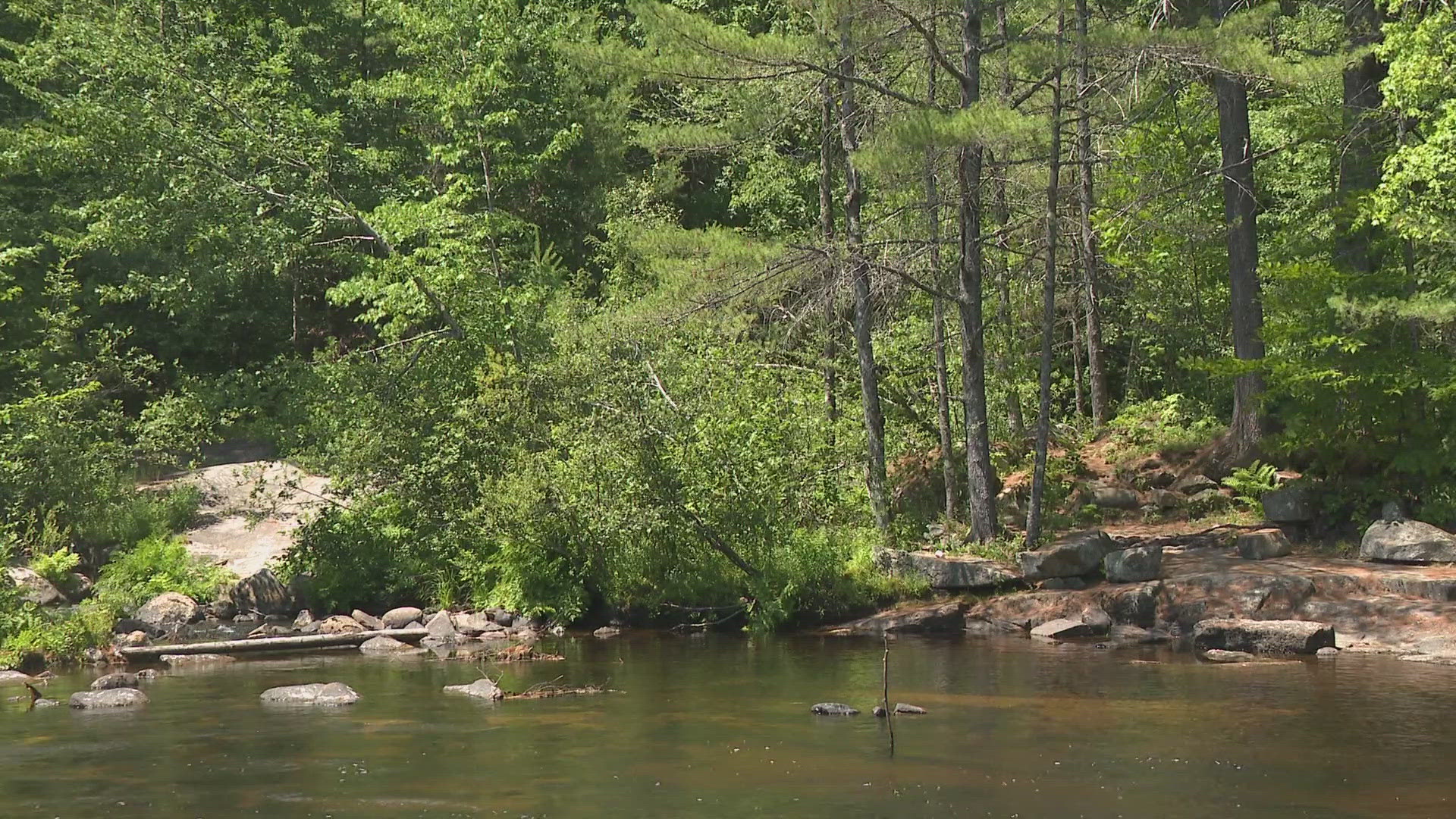NAPLES, Maine — Environmental experts say they are expecting local salmon populations to thrive once again in Sebago Lake after a historical dam was removed last month.
The Edes Falls Dam in the town of Naples stood for decades as a reminder of the town's early beginnings. However, environmental experts said the landmark was causing a problem for local salmon, which need the full length of the Crooked River to spawn upstream.
Partner and project lead for the Maine Council of Trout Unlimited Jim Westcott said the problem was made clear after a state spawning survey was conducted in 2014.
"They thought they were going to find 300 redds, the length of the river," Westcott said. "They found over 2,000 redds."
A redd is something like a gravel nest or depression that salmon craft to help protect their eggs, according to wildlife officials.
While some salmon is stocked by the Maine Department of Inland Fisheries and Wildlife, environmentalists quickly realized the river could be capable of producing all of the salmon needed to support the fish population in Sebago Lake if conditions were met.
Without the dam's removal, 80 percent of the salmon's breeding grounds would be blocked according to Lakes Environmental Association Executive Director Colin Holme, a partner of the removal project.
"The planning really started even pre-2019 and it has evolved along the way," Holme said.
Several other partners supported the removal of the dam, including the Sebago Chapter of Trout Unlimited, Casco Bay Estuary Partnership, Maine Council of Trout Unlimited, Maine Department of Inland Fisheries and Wildlife, The Natural Conservancy, Sebago Rotary and more.
After a town vote approved the dam's removal in June, supporters like Holme said he hopes the community, in place of the dam, could find a shared space to enjoy alongside the aquatic life of the area.
"It was a beautiful, historical dam, and I don't think anyone took it lightly," Holme said. "There is some loss with the historical structure, but the gain is for the native landlocked salmon of Sebago Lake."
Partners who helped remove the dam said stones from the structure will now be repurposed in upcoming local town projects.

